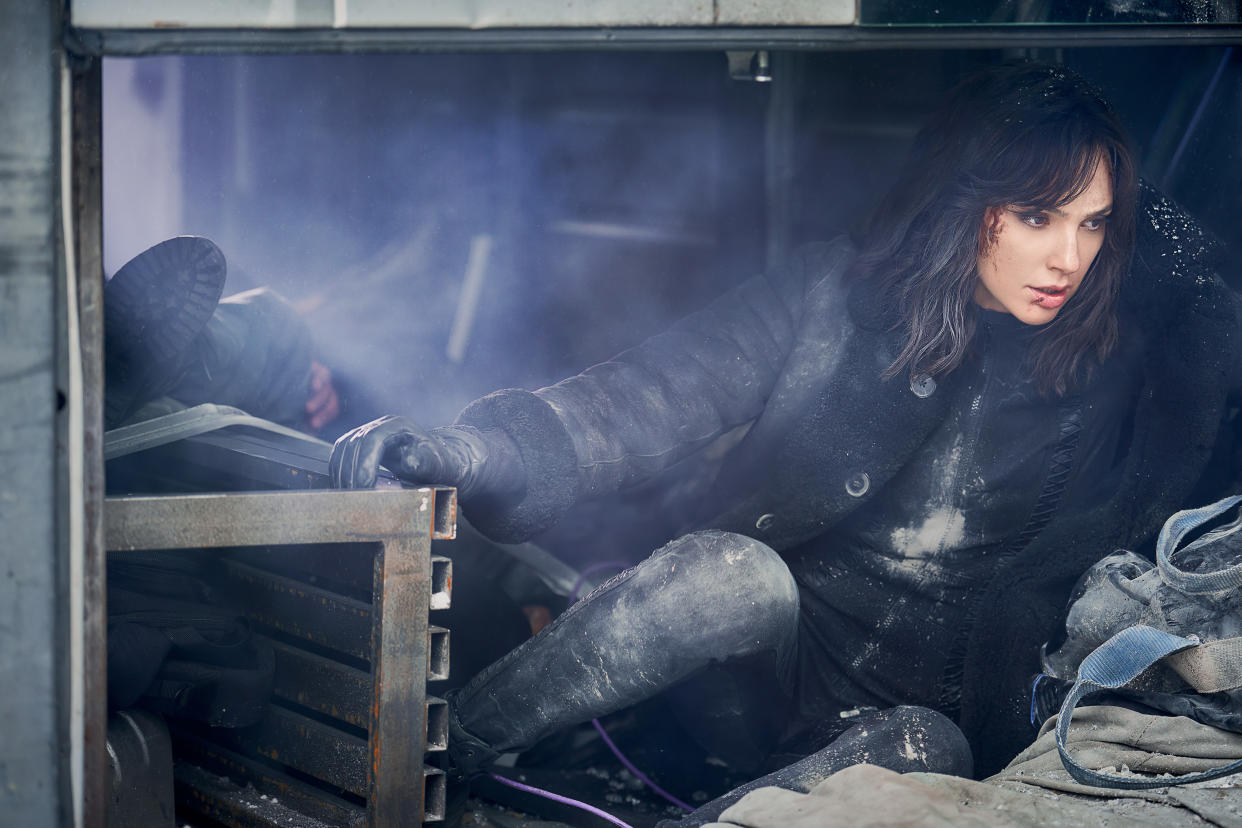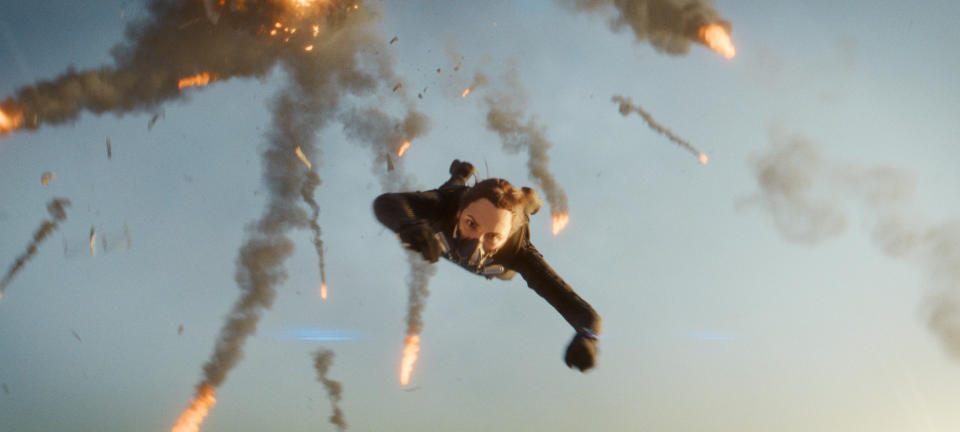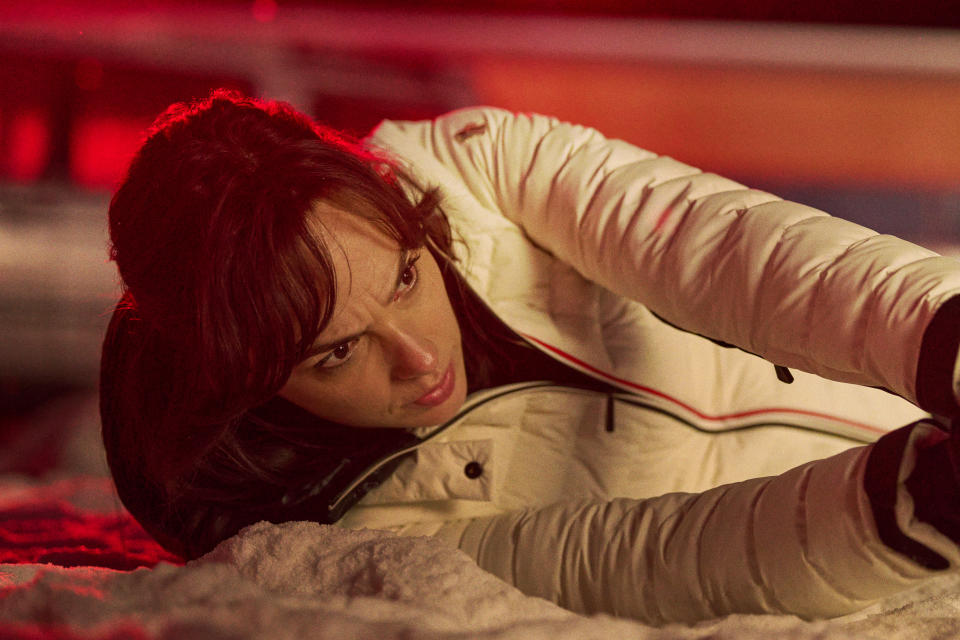The Surprising Reference Point for Gal Gadot’s Action Movie ‘Heart of Stone’? ‘Octopussy’

- Oops!Something went wrong.Please try again later.
- Oops!Something went wrong.Please try again later.
For James Bond fans of a certain age, the new Netflix action film “Heart of Stone” quickly elicits memories of the pleasures of Roger Moore-era 007 movies like “The Spy Who Loved Me” and “For Your Eyes Only” — not just in the jet-setting international locations and the spy story featuring Gal Gadot as elite secret agent Rachel Stone on a mission to protect an object called “The Heart,” but in the specific texture of the image. The parallels are not accidental, according to cinematographer George Steel. “I love ‘Octopussy,’ and I would joke with [director] Tom [Harper], ‘I want this film to look like ‘Octupussy,'” Steel told IndieWire. “He would always look at me slightly terrified, but when Roger Moore comes out of the jungle in that great jacket, I think it’s so beautiful.”
The juxtaposition of movie star glamor and gritty action embodied in that “Octopussy” shot was a guiding light for Steel, as he and Harper sought to play with Gadot’s larger-than-life image. “We didn’t want her to be a glossy ‘Wonder Woman,'” Steel said. “The idea was that it would be interesting to take someone as beautiful as Gal and put her in a slightly rougher aesthetic.” In addition to the Bond pictures, Steel looked to political thrillers of the 1970s for inspiration, referencing films like Alan J. Pakula’s paranoia trilogy (“Klute,” “The Parallax View,” “All the President’s Men”) and the Robert Redford-Faye Dunaway classic “Three Days of the Condor.”
More from IndieWire
“Condor” is a particular favorite of Harper’s, and although “Heart of Stone” contains some extremely elaborate action set pieces, he tried to be faithful to its realistic aesthetic. “I love the feel and the tone and the claustrophobia of those ’70s spy thrillers,” Harper told IndieWire. “‘Three Days of the Condor’ feels really grounded in the sense that it’s all done for real, so the guiding principle for the action [in ‘Heart of Stone’] was that everything, in theory, should be possible.” That meant that even for the film’s wildest stunt sequences, as when Gadot is plummeting through the air without a helmet or mask, the filmmakers started with a baseline of real action to digitally enhance. “That was a real shot we did with a skydiver,” Harper said. “Then we tracked the shot and replaced the skydiver with a ‘digi-double’ of Gal. So the cinematography is all grounded, it’s never flying around in an imaginary space where you couldn’t get a camera.”

Although some of “Heart of Stone” was shot digitally with a Red Raptor, the filmmakers were also careful to create an organic, celluloid frame of reference as a starting point — another reason the movie evokes the feeling of those classic Bond flicks. “Theoretically you can do anything with digital, you can make it look however you want,” Harper said. “However, George and I have found that whenever we’ve tried to make digital look like film in post, it never works. You just don’t have the reference point. You aren’t as bold as what you get with film; you think, ‘Would it really be that out of focus? Should it really be that grainy?’ You start with this beautiful image and are degrading it so much that the execs come in and say ‘What are you doing? You’ve gone insane.'”
Harper and Steel decided that for “Heart of Stone” they would shoot as much as possible on film and then match material that was shot digitally — primarily scenes in low-light situations that would have been time- and cost-prohibitive to shoot with 35mm — to the properties of the celluloid images. “The main reason for that was to restrict our hand and lock ourselves into a look,” Harper said. That look is both grainier and more vibrantly colorful than what one finds in most action films of the digital era, and it’s in keeping with Steel’s personal taste when it comes to cinematography. “I use a lot of filters and diffusion to soften the digital image anyway,” Steel said. “I really hate that crisp, overwhelmingly detailed look you get from a lot of digital cameras.”

In trying to match the softer look of the ’70s and early ’80s movies that served as his influences, Steel also turned to vintage lenses. “We used the same lenses that those films were shot on, Panavision G-series anamorphics,” he said, “with some more modern lenses mixed in.” At times Steel feared he was pushing the images too far in an old-fashioned direction. “You get so used to the crispness and clarity of digital that it was scary seeing the rushes — I was like, ‘Oh shit, this is quite soft and quite grainy.’ But in the end, I’m glad we stuck to our guns.”
“We fought quite hard for that,” Harper said of the film’s textured look. “Increasingly there’s a tendency toward cleaner, sharper images in cinema, but trying to capture the magic and beauty and softness and texture feels important. George and I have always tried to embrace the shadows and the out-of-focus and the anomalies of the image as well as the perfection. A lot of George’s process is about filtering or degrading or not lighting or negative space — embracing all those sorts of imperfections. That’s the thing about film: It’s always the accidents and the imperfections that make it special.”
“Heart of Stone” is now streaming on Netflix.
Best of IndieWire
Sign up for Indiewire's Newsletter. For the latest news, follow us on Facebook, Twitter, and Instagram.

